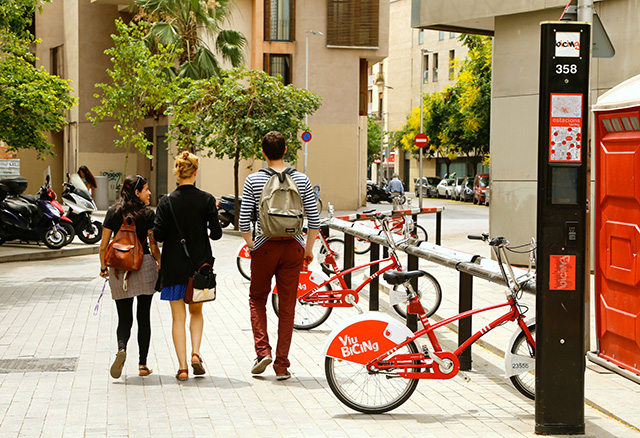
Design that fosters civic engagement
Reena Agarwal is the policy director at the Center for Active Design, which Knight Foundation supports to advance civic engagement. Photo above: New York City. Related Link
Center for Active Design to create guidelines for promoting civic engagement using design with $115,000 from Knight Foundation “x” – Press release (09/05/14)
Four years ago, a partnership among several New York City agencies, the private sector and academia yielded the publication “Active Design Guidelines.” Because of that work, along with industry research, we know that the design of our communities has a large impact on our daily lives, often affecting issues related to health, security and access to services. Many legislative and design decisions, such as those dealing with land use, zoning and transportation, can affect residents, influencing and often determining access to items such as public spaces and civic institutions.
The Center for Active Design was created to foster the use of “Active Design” strategies, which we see as essential to building strong and active communities. We have promoted “Active Design” implementation as a new approach to solving current health epidemics, and now we would like to offer a fresh approach to fostering civic engagement.
We believe that design plays a key role in developing communities that are more civically engaged, and we want to understand its true impact. Funding provided by Knight Foundation will allow us to initiate a collaborative process that explores design and its impact on civic engagement. Our goal is to help build communities that are stronger, healthier and more sustainable over the long run.
Communities that experience high levels of civic engagement also experience a multitude of other benefits. They foster residents who feel empowered to be a part of the political process, and have a sense of pride and ownership over public spaces. Not surprisingly, they experience high levels of voter registration, with large numbers of citizens who participate in national and local elections. They also foster stronger social relationships and positively impact the health and well-being of residents. However, we know that few communities reach this level of engagement.
This partnership with Knight Foundation is just the beginning. We will collect available research, convene an interdisciplinary group of professionals to advise us, and then offer a manual of practical design strategies that promote civic engagement.
We want to start a new informative dialogue among designers, political strategists, researchers and community engagement professionals. The hope is that this ongoing discussion will yield innovative solutions to the current lack of civic engagement that many communities experience.
We are confident that this initiative will produce a usable resource for designers and community leaders, and we are excited to build upon our goals of using design to build stronger and healthier communities that offer meaningful engagement opportunities.

Photo by Emily Young, provided via Center for Active Design.
Recent Content
-
Communitiesarticle ·
-
Communitiesarticle ·
-
Communitiesarticle ·


